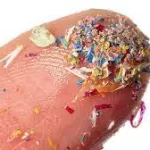Date: January 20, 2024
In an evolving landscape of cancer care, the practice of “white bagging” is sparking a contentious battle between oncologists, insurers, and specialty pharmacies. White bagging, a method where specialty pharmacies deliver cancer drugs directly to physicians’ offices instead of being purchased by oncologists, is gaining traction, raising concerns among medical professionals about its impact on patient safety, costs, and overall healthcare access.
Oncologist John DiPersio, MD, PhD, at Siteman Cancer Center in Washington University, has taken a stand against white bagging due to its potential adverse effects on patients and practices. The traditional buy-and-bill pathway, where oncologists directly purchase specialty drugs, has been upended by white bagging, leading to increased costs for patients, lower reimbursement for oncology practices, and potential safety issues.
A 2021 survey by the Association of Community Cancer Centers revealed that 87% of its members encountered white bagging mandates from insurers for some patients. The practice has become more prevalent, accounting for 17% of infused oncology product sourcing from clinics and 38% from hospital outpatient departments, according to a 2023 analysis by Adam J. Fein, PhD, of Drug Channels Institute.
White bagging shifts the coverage and reimbursement dynamics of cancer drugs. Instead of falling under a patient’s medical benefit, where oncologists purchase drugs and receive reimbursement for both the drug cost and administration, white bagging places drugs under a patient’s pharmacy benefit. Specialty pharmacies prepare the infusion and ship it directly to the physician’s office, leading to lower reimbursement for oncologists, higher costs for patients, and savings for insurance companies.
Insurers argue that white bagging reduces patients’ out-of-pocket costs by preventing hospitals and physicians from charging high fees for purchasing and storing specialty medicines. However, evidence suggests that while it may decrease insurers’ costs, it raises out-of-pocket expenses for patients and diminishes reimbursement for oncologists.
A recent analysis published in JAMA Network Open found that insurance payments to providers were over $2000 lower for drugs distributed through white bagging compared to traditional buy and bill. Patients also faced higher out-of-pocket costs with white bagging, highlighting the complexities and potential pitfalls of this practice.
White bagging is seen by critics as a profit-driven strategy for health insurers, specialty pharmacies, and pharmacy benefit managers. The intricate relationships between affiliated entities in the drug supply chain raise concerns about conflicts of interest and potential manipulation of medication sources to benefit the affiliated pharmacy.
In addition to financial implications, concerns have been raised about the safety of white bagging. Proponents argue that specialty pharmacies adhere to safety requirements, ensuring the safe storage, handling, and dispensing of drugs. However, oncologists contend that white bagging can be dangerous, limiting their control over drug sourcing, introducing the risk of contamination.











